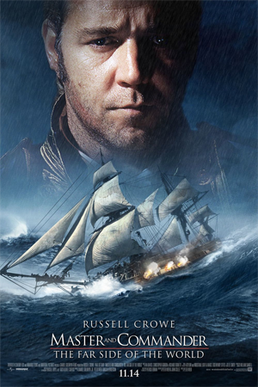What would happen if an alien spaceship came to Earth over South Africa?
District 9 tells the story of what happens after an alien ship appears over Johannesburg, South Africa in 1982. The locals watch and wait, but for months, the ship just hovers there with no signs of movement. Finally, the government sends in a team to investigate and it finds the ship is populated by a large group of very malnourished aliens. Suddenly the aliens become the world's newest refugee group. Humanitarian aid is called in, and a special area (the District 9 of the title) is built for the aliens to live in. There is one big problem, however: their ship is broken, so the aliens are stuck being South Africa's permanent guests. Over the next two decades, District 9 devolves into being a slum; this, added the governmental costs of keeping the aliens alive creates tension with the citizens of South Africa and leads to interspecies violence. By 2010, a decision has been made to raze District 9 and relocate the aliens to a new site 200 kilometers away from Johannesburg. The film opens with documentary-style interviews recounting the appointment of an affable and naive bureaucrat named Wikus van de Merwe to lead the eviction and relocation efforts. The interviews hint that something went terribly awry with the operation, and one interviewee mentions feeling like Wikus' actions during the operation felt like "a betrayal." You can't believe that happy-go-lucky Wikus is capable of doing anything to betray his fellow humans, but over the course of the film, you see the circumstances he is trapped in and how that alters his humanity.
I was blown away by this movie. It turned the premise of "aliens coming to Earth" on its head and tackles themes like racism, xenophobia, bureaucracy, and military force. The aliens land in an unexpected place, and they need our help, which we give. But then the alien issue turns from "how can we help them?" into "how can we get rid of them?"
Unsurprisingly, the plot was heavily influenced by the director's growing up during apartheid in South Africa. The razing of District 9 is even inspired by a real event when the residents of a mixed-race district in Cape Town were forcibly removed so their area could be used exclusively by the white population.
The most surprising thing about this movie is that it's the first feature film for both its director and lead actor. What a heck of a first film. I liked everything about it. It's framed by a faux-documentary that gives it a sense of realism. A lot of science fiction films are intended to be allegorical, but this one really brings it home. Highly recommended viewing.
District 9 tells the story of what happens after an alien ship appears over Johannesburg, South Africa in 1982. The locals watch and wait, but for months, the ship just hovers there with no signs of movement. Finally, the government sends in a team to investigate and it finds the ship is populated by a large group of very malnourished aliens. Suddenly the aliens become the world's newest refugee group. Humanitarian aid is called in, and a special area (the District 9 of the title) is built for the aliens to live in. There is one big problem, however: their ship is broken, so the aliens are stuck being South Africa's permanent guests. Over the next two decades, District 9 devolves into being a slum; this, added the governmental costs of keeping the aliens alive creates tension with the citizens of South Africa and leads to interspecies violence. By 2010, a decision has been made to raze District 9 and relocate the aliens to a new site 200 kilometers away from Johannesburg. The film opens with documentary-style interviews recounting the appointment of an affable and naive bureaucrat named Wikus van de Merwe to lead the eviction and relocation efforts. The interviews hint that something went terribly awry with the operation, and one interviewee mentions feeling like Wikus' actions during the operation felt like "a betrayal." You can't believe that happy-go-lucky Wikus is capable of doing anything to betray his fellow humans, but over the course of the film, you see the circumstances he is trapped in and how that alters his humanity.
I was blown away by this movie. It turned the premise of "aliens coming to Earth" on its head and tackles themes like racism, xenophobia, bureaucracy, and military force. The aliens land in an unexpected place, and they need our help, which we give. But then the alien issue turns from "how can we help them?" into "how can we get rid of them?"
Unsurprisingly, the plot was heavily influenced by the director's growing up during apartheid in South Africa. The razing of District 9 is even inspired by a real event when the residents of a mixed-race district in Cape Town were forcibly removed so their area could be used exclusively by the white population.
The most surprising thing about this movie is that it's the first feature film for both its director and lead actor. What a heck of a first film. I liked everything about it. It's framed by a faux-documentary that gives it a sense of realism. A lot of science fiction films are intended to be allegorical, but this one really brings it home. Highly recommended viewing.










